Sandwich Islands Jules Tavernier San Diego Museum of Art
Virtual Art Alive 2020 welcomes the below creative "floral" designs from our official designers using flowers and items from home. Cheers to our designers!
Flying Apsaras interpreted by Jeff Fine
Materials Used, Interpretation 2: Dried winterberry, palm, protea, wrapping paper, cane, ribbon.
Floral Designer Statement, Estimation ane: "My inspiration was and so show the motion and shape of the flying apsaras."
Floral Designer Statement, Estimation ii: "Focusing on the movement and airiness of the flight apsaras. Over all arrangement is asymmetrical (ikebana fashion)."
SDMA Drove: Flying Apsaras, 17th century (or 18th century). Wood, with trace of colors. Museum purchase with funds provided past the Barbara and William Karatz Fund in memory of Barbara L. Karatz. 2001.ane.
Gallery 7
Inro, Netsuke, and Ojime interpreted past Vita Reivydas
Floral Designer Argument: "I was inspired by the delicate ornamentation and subtle coloring on this solid container. It seemed as though the decorative accents were floating off of their foundation. I also loved the juxtaposition of the soft pampas grass tassel I incorporated, compared to the ivory ornamentation in the original work."
SDMA Drove: Inro, Netsuke, and Ojime, Nippon, 19th century. Lacquered wood, ivory, and textile. Gift of Mr. Franklin L. Miller. 1965.15.f.
Gallery viii
3 Female Figures in a Landscape by Karl Hofer interpreted by Kat Castagnoli, AIFD, CCF
Floral Designer Argument: "My inspiration painting was Karl Hofer'due south Iii Female Figures in a Landscape, and so I wanted to capture the peach, blue, and pale green tones in the painting, equally well as depict the 3 female figures 'in the flesh.' I was lucky enough to have access to some fresh floral, which I incorporated, just the rest was found and foraged from what I had at in and around me at home. I had a lot of fun thinking exterior the box of what to use in creating this slice — it was the perfect quarantine project!"
SDMA Collection: Karl Hofer. Three Female Figures in a Landscape, ca. 1909. Oil on sheet. Gift from the Manor of Vance E. Kondon and Liesbeth Giesberger. 2011.103.
Gallery 11
Moon Landscape by Max Beckmann interpreted by Donna L. West
Floral Designer Statement: "The curving sweep of shimmering river and strong horizontal lines in the foreground (span) and afar elongated clouds
inspired the argent fabric contrast of night containers and leaves. 2 peonies empathize perspective distance of the moon, the back bend of the gerbera daisy suggests the street low-cal. The horizontal aspidistra leave mimic the looming clouds."
SDMA Collection: Max Beckmann. Moon Landscape, 1925. Oil on canvas. Heritance of Earle West. Grant. 1972.vi.
Gallery 11
Head of the Adorned Buddha interpreted past Yara Bertran
Floral Designer Statement: "Considering I could not visit the museum to check all the beautiful detail on the Head of the Adorned Buddha, I decided to make something unexpected and fun to brand people smile in a time that everybody is stress. I as well wanted to piece of work with materials that I tin can recycle, materials that people are familiar with and are all using oft at abode during these days: We are ordering nutrient online, then I had cardboard boxes and packing material, I used these to create the face and features. I noticed that every time I guild nutrient from the supermarket I never take an issue finding cauliflower, it is not a very popular veggie for kids and many adults. I used this vegetable to create Buddha's headpiece. Like many people, I notice myself baking often during the lockdown, banana staff of life and biscuits are among the favorite in my family unit, the background of the Head of the Adorned Buddha is a baking sheet. And lastly, we are all playing board games, I chose scrabble'south wooden tile to create the cervix and support of the Buddha'southward head. The final piece is 14 in. tall X xi in.
SDMA Collection: Head of the Adorned Buddha, Thailand, ca. 1500. Bronze. Gift of Earle W. Grant. 1961.12.
Gallery 12: N
An elephant, composite, made up of dancing women serves as a mount to an archer interpreted by Rachel Hecathorn
Floral Designer Statement: "Wanted to recreate the composite imagery of the elephant made up of dancing women. Was really excited to challenge myself to see if I could pull of the construction with what I could detect at abode. When I discovered that a grapevine burl I had looked like the kneeling archer, I was excited to be able to complete the whole epitome!"
SDMA Collection: An elephant, composite, made up of dancing women serves every bit a mount to an archer, ca. 1825. Opaque watercolor and gold on paper. Edwin Binney 3rd Collection. 1990.1426.
Gallery 12: North
The Germ of the Creation past André Masson interpreted by Jamie Kales
Floral Designer Statement: "The title of the piece is '20/twenty Vision; 2020 Vanitas.' Juxtaposes life and expiry, replete with symbols: Sunflower with a Biohazard symbol atop, the trap of netting, religious allusions (yin yang), luggage tag, die. Germinating blooms vs. Germ (pathogen). 'We're All in This Together.'"
SDMA Drove: André Masson. The Germ of the Creation, 1942. Gouache and pastel on canvas. Gift of Mrs. Saidie A. May. 1946.30.
Gallery 12: S
Basin interpreted by Lori Walton
Floral Designer Statement: "Our inspiration was Basin WITH GEOMETRIC DESIGNS
Iran, 13th century, Stonepaste, with decoration under turquoise coat. We found our "basin" to be a source of calm, peace and solidarity. For us, the circular nature of BWGM represents the earth and our connexion. All of life and life'southward events, flow into one."
SDMA Collection: Bowl, Iran, 13th century. Ceramic. Museum buy with funds provided by the Asian Arts Council
Conservation funded by the Association of Iranian American Professionals, the House of Iran, and the Persian Cultural Center. 1967.15.
Gallery xiii: North
Blueish Passenger by Marino Marini interpreted by Sandy Villa, AIFD, CFD
Floral Designer Statement: "This is the 1st bloom arrangement I've made since the pandemic started and it was challenging to say the least with limited access to product. I feel the horse and rider are the potent lines that I created within, keeping shut to the colors that attracted me to this selection. The bunny tails are the equus caballus's head tossed back."
SDMA Collection: Marino Marini. Blue Passenger, 1958. Oil on canvass. Heritance of Earle Due west. Grant. 1972.67.
Gallery 13: South
Looking Well past Jean Dubuffet interpreted by Nancy Hagen Baldwin
Floral Design Statement: "Brut fine art, bones, forms as a child sees, texture, and whimsy (a bit featherbrained?). I wanted to create a 'Fun' piece that uses basic everyday objects to imply 'Looking Well' and feeling well: that which occurs after a walk, bike ride, or outdoor exploration.The potent oval course of the barrel top (found on a hike), the circular/rounded form of the bike wheel (a simple child's shape that is repeated throughout painting), and the overall diagonal line are emphasized. The lily grass sweeping from the back reflects the competing horizontal lines. Bark and the energizing ruby geranium florets (a symbol of happiness and positive emotions in the language of flowers) reflect both the dominant textures and colors of the painting. Of grade, the whimsical sneakers imply activeness, play, and youth (bank check out the painting!). All in all, being well, 'Looking Well!'"
SDMA Collection: Jean Dubuffet. Looking Well, 1961. Oil on sheet. Museum buy with funds from the Armand Hammer Foundation and Anne R. and Amy Putnam and a gift from Vivian Conway and Inez Grant Parker, by commutation. 1988.29.
Gallery xiii: S
Flin Flon 8 by Frank Stella interpreted by Leslie O'Dell
Floral Design Statement: My inspiration came from color first, and second the circular forms. Looking at color I found the practise fun and challenging to search for the best colors in my garden. Finding vino barrel hoops was just what I hoped for to give the composition a spherical shape. A much needed distraction while sheltering.
SDMA Collection: Frank Stella. Flin Flon 8, 1970. Acrylic on sail. Museum buy with Resale Funds from fine art given by Mrs. Frederick Due east. Davies and Mrs. Albert Gallatin Wheeler. 1979.xix.
Gallery 13: South
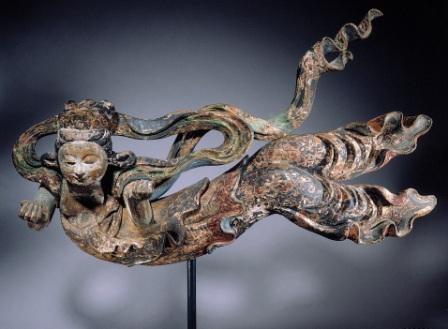
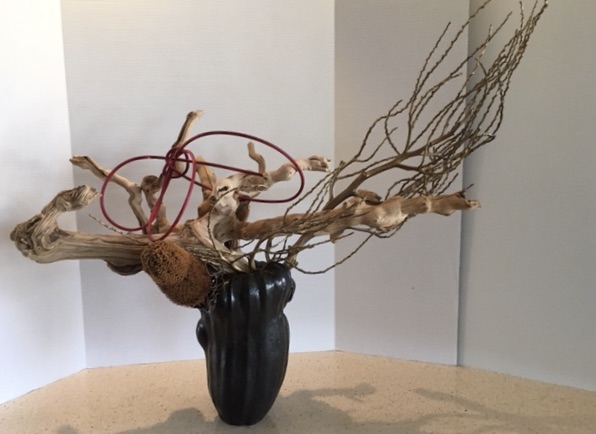
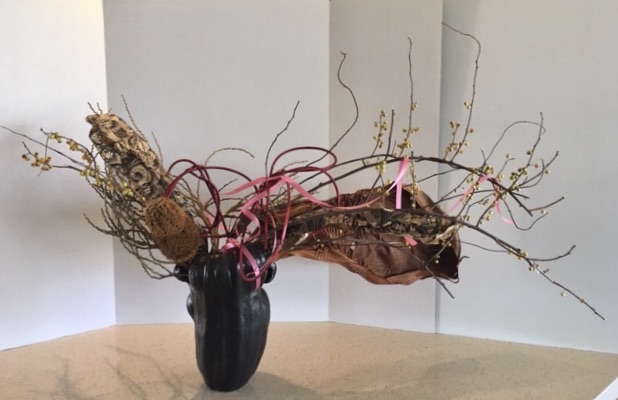
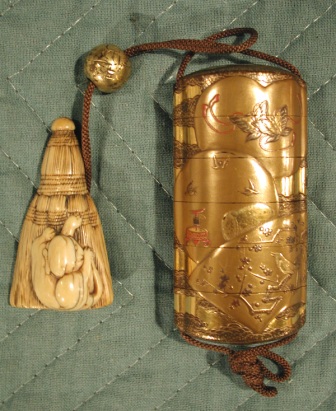
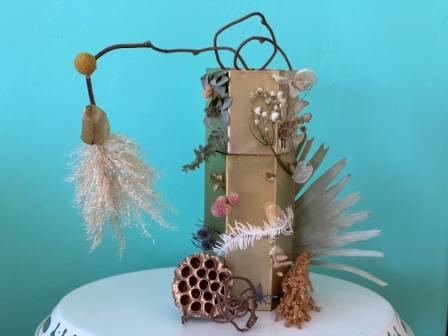
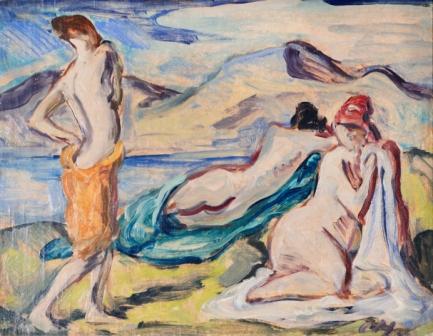
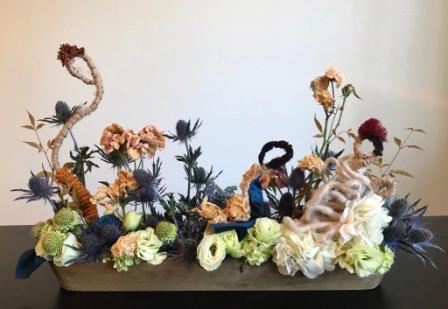
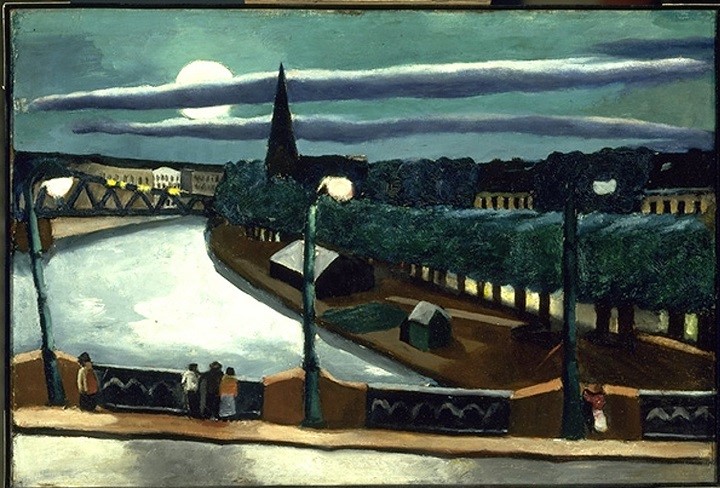
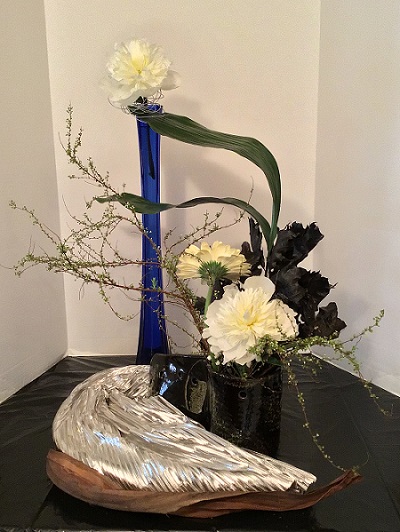
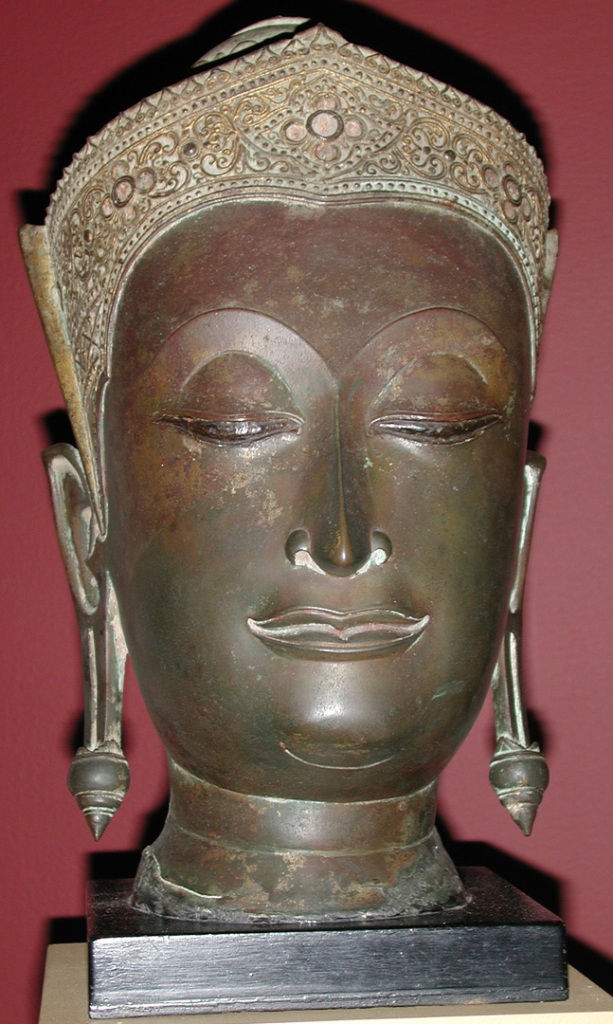
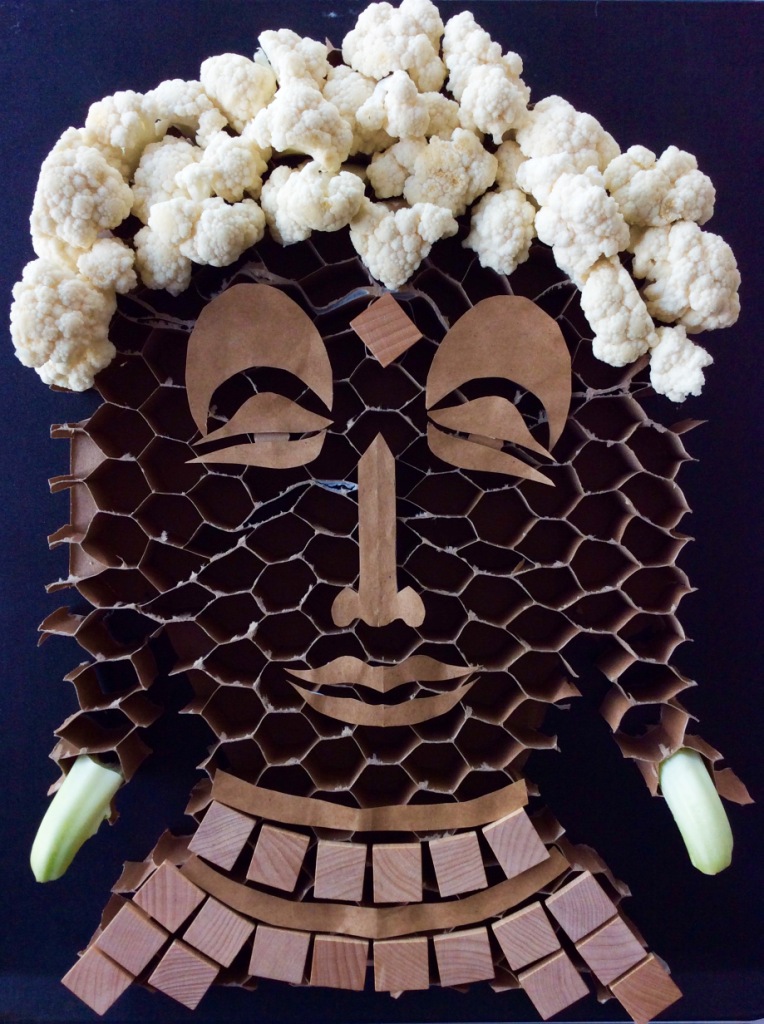
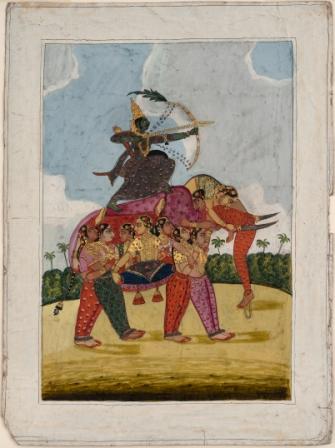
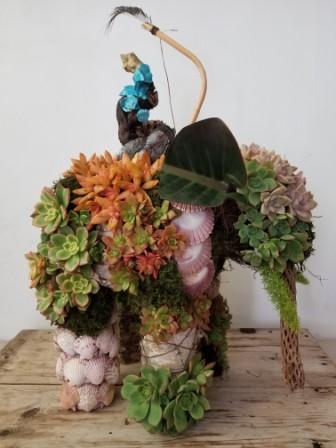
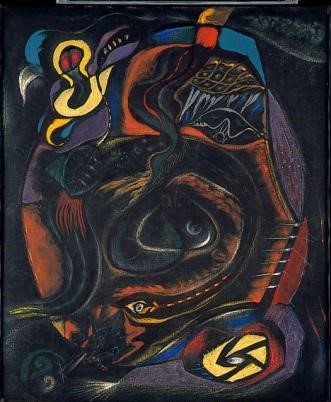
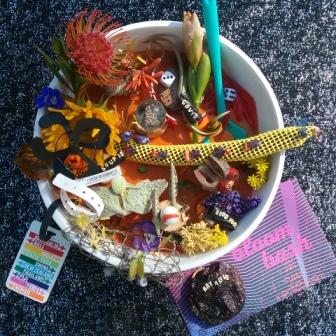
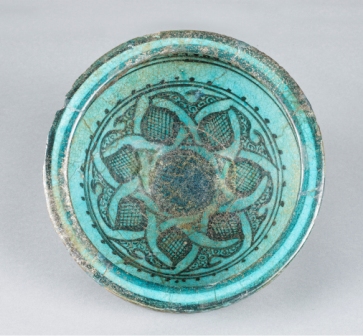
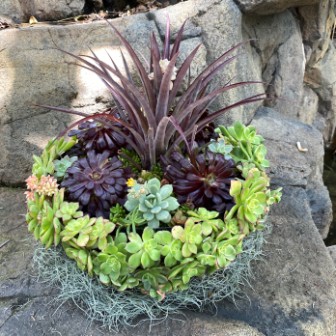
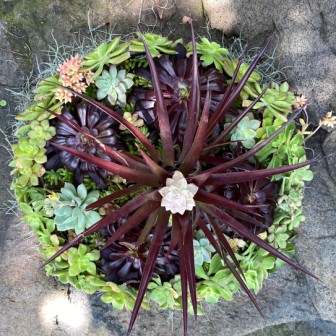
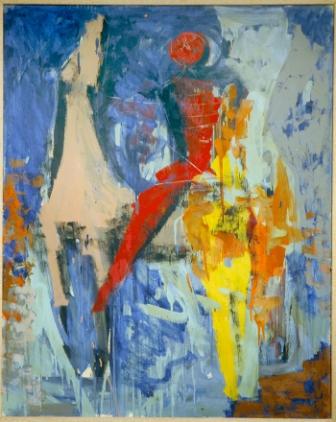
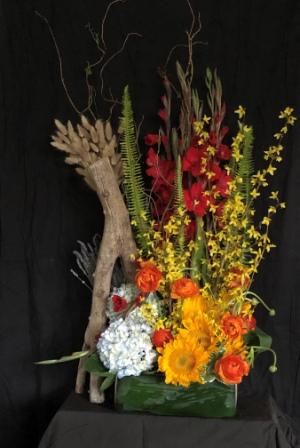

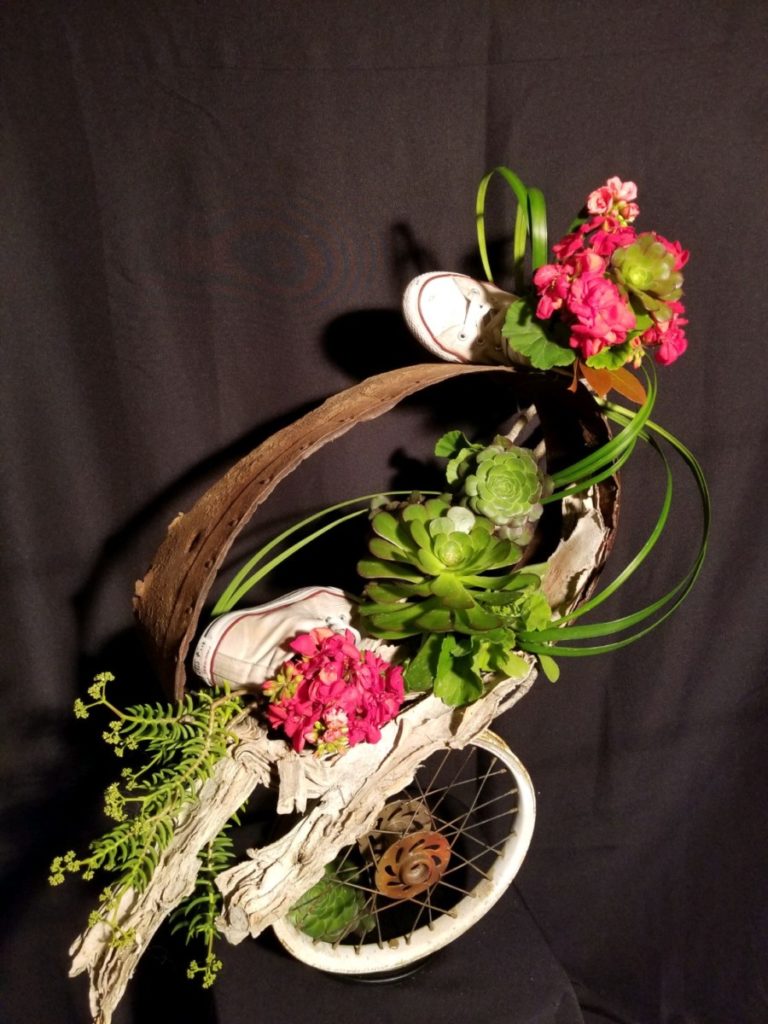
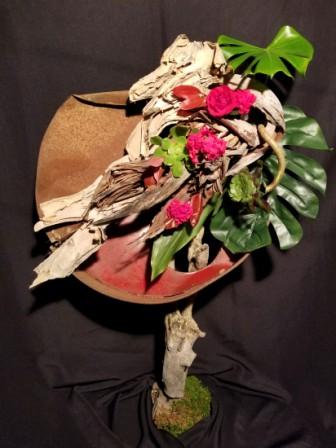
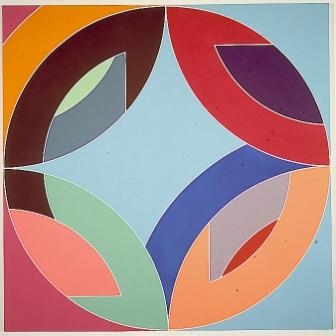
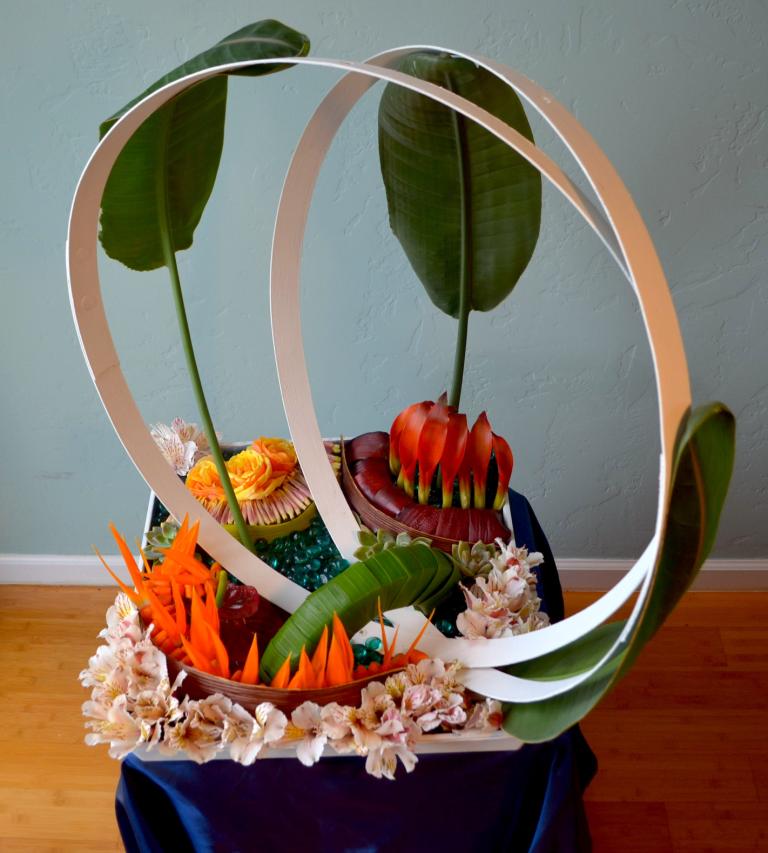
0 Response to "Sandwich Islands Jules Tavernier San Diego Museum of Art"
Post a Comment